Best ferns to grow indoors – 5 ideas that will add texture to your plant collection
Experts recommend the top ferns to grow indoors and share advice on how to maintain them
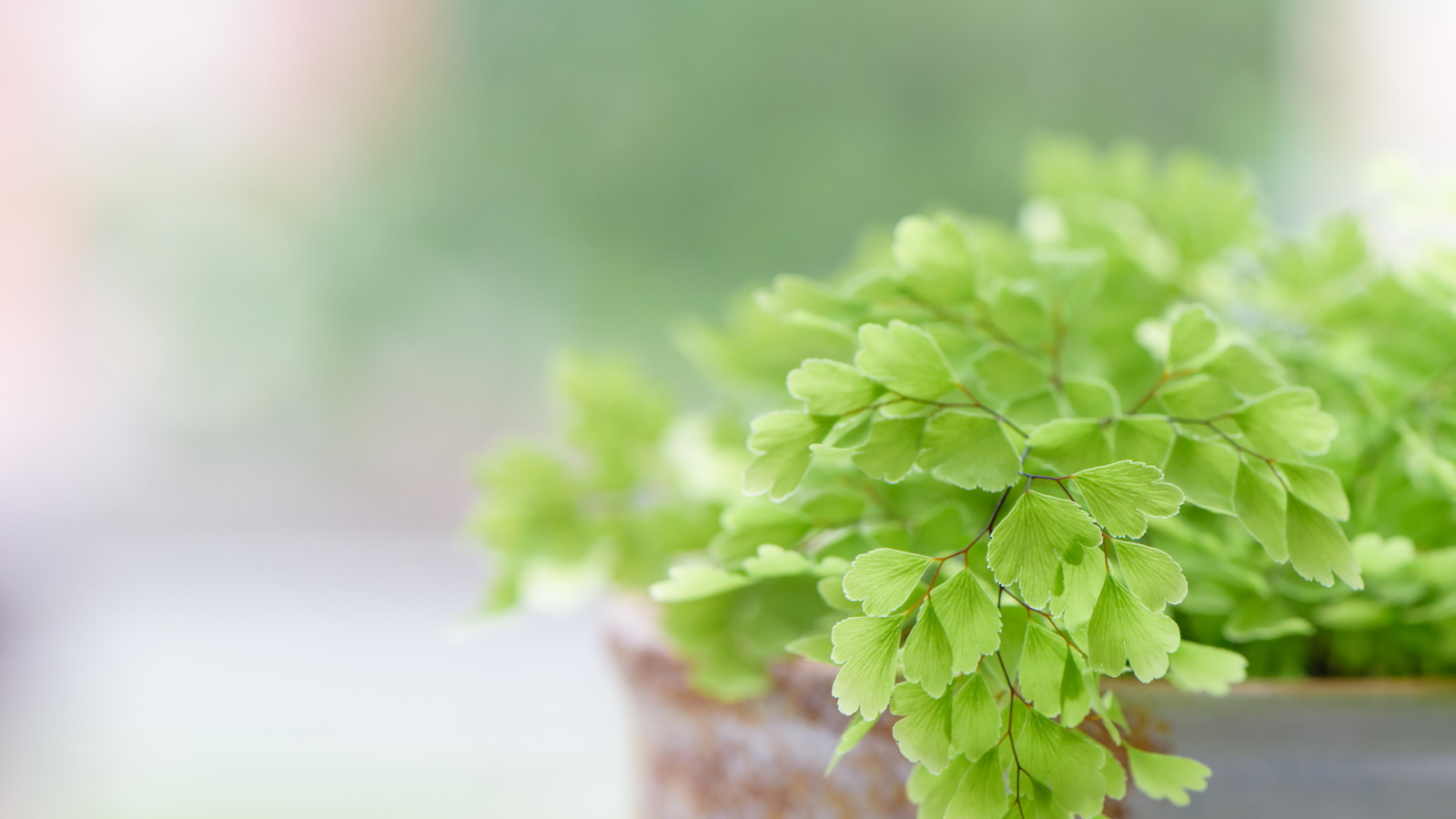

Ferns are known for their lush green foliage and unique appearance, and undoubtedly bring a touch of nature to indoor spaces. They should certainly be a consideration if you are thinking about indoor garden ideas.
The word 'fern' is a catch-all term, referring to a large group of plants in the Pteridophyta plant division. All ferns share certain characteristics, namely their ability to reproduce through spores, as opposed to flowers and seeds. Today, there are over 10,000 known fern species, meaning a vast range of plants to pick from.
'Since ferns can be found growing across the globe, not all will require the same care,' says Tylor Rogers, indoor plant expert and owner of plant shop ARIUM, based in Portland, Oregon. 'Generally, ferns do love higher humidity, bright dappled sunlight, and to never dry out,' Tylor continues. Importantly, each fern will have specific growing needs.
Ferns can come in various shapes and sizes, and many can be grown successively indoors, offering a wide range of aesthetic options for your home. They're even a great option for a houseplant that makes your home feel cozy for fall. From the delicate cloud-like fronds of the asparagus fern to the bold and structural leaves of the Boston fern, these plants can add impact to any room.
Many fern varieties are relatively low-maintenance, making them suitable for beginners and experienced indoor gardeners. They are both resilient and adaptable, and can contribute to a greener and healthier home.
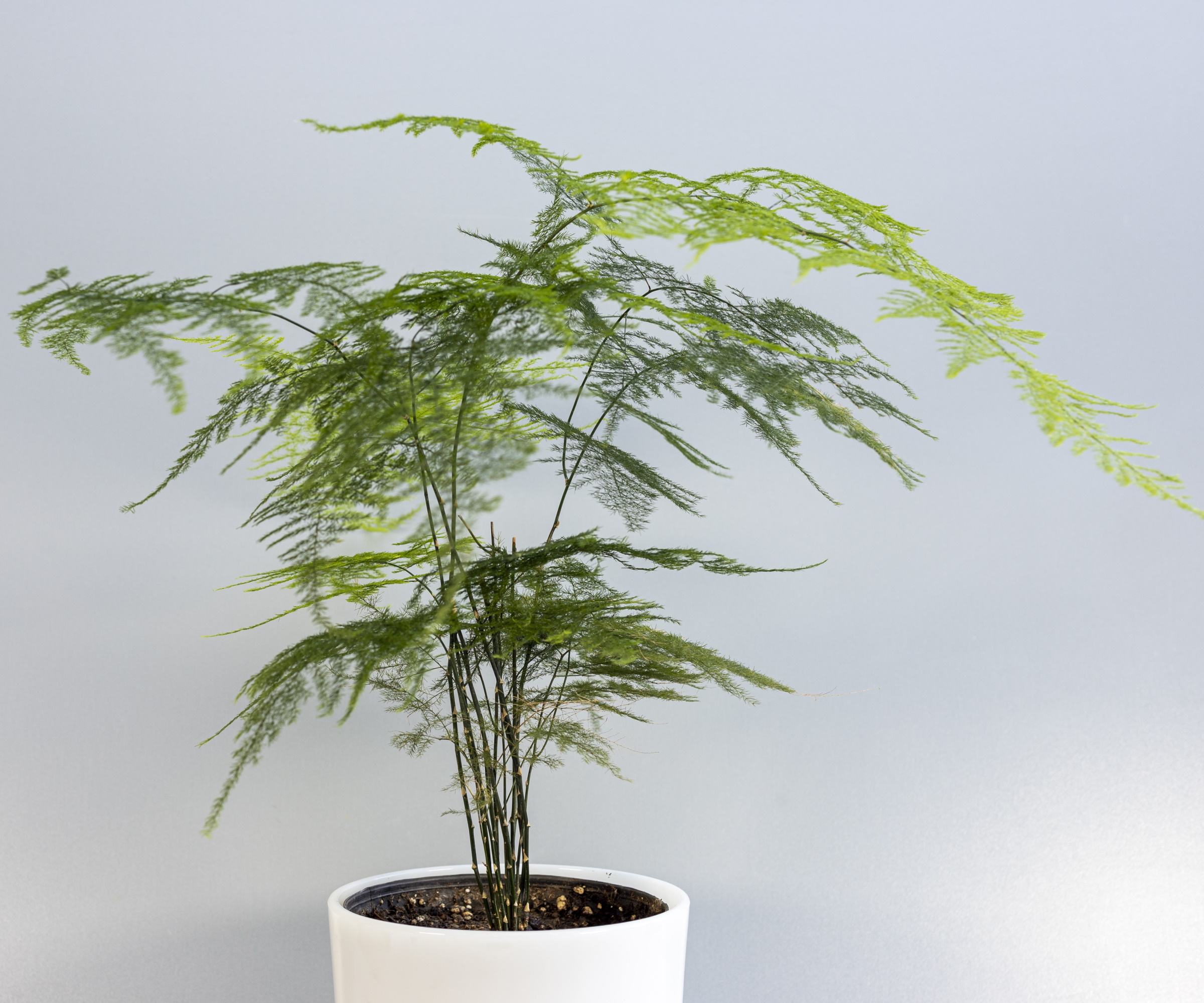

Tylor Rogers is an indoor plant expert and owner of ARIUM, a plant shop based in Portland Oregon. Tylor loves transforming interiors using plants and introducing people to plants they might have never seen before!
5 of the best ferns to grow indoors
Ferns are a great choice for an indoor plant and with so many to pick from, you are sure to find a plant that suits your home. We asked two experts for their fern recommendations.
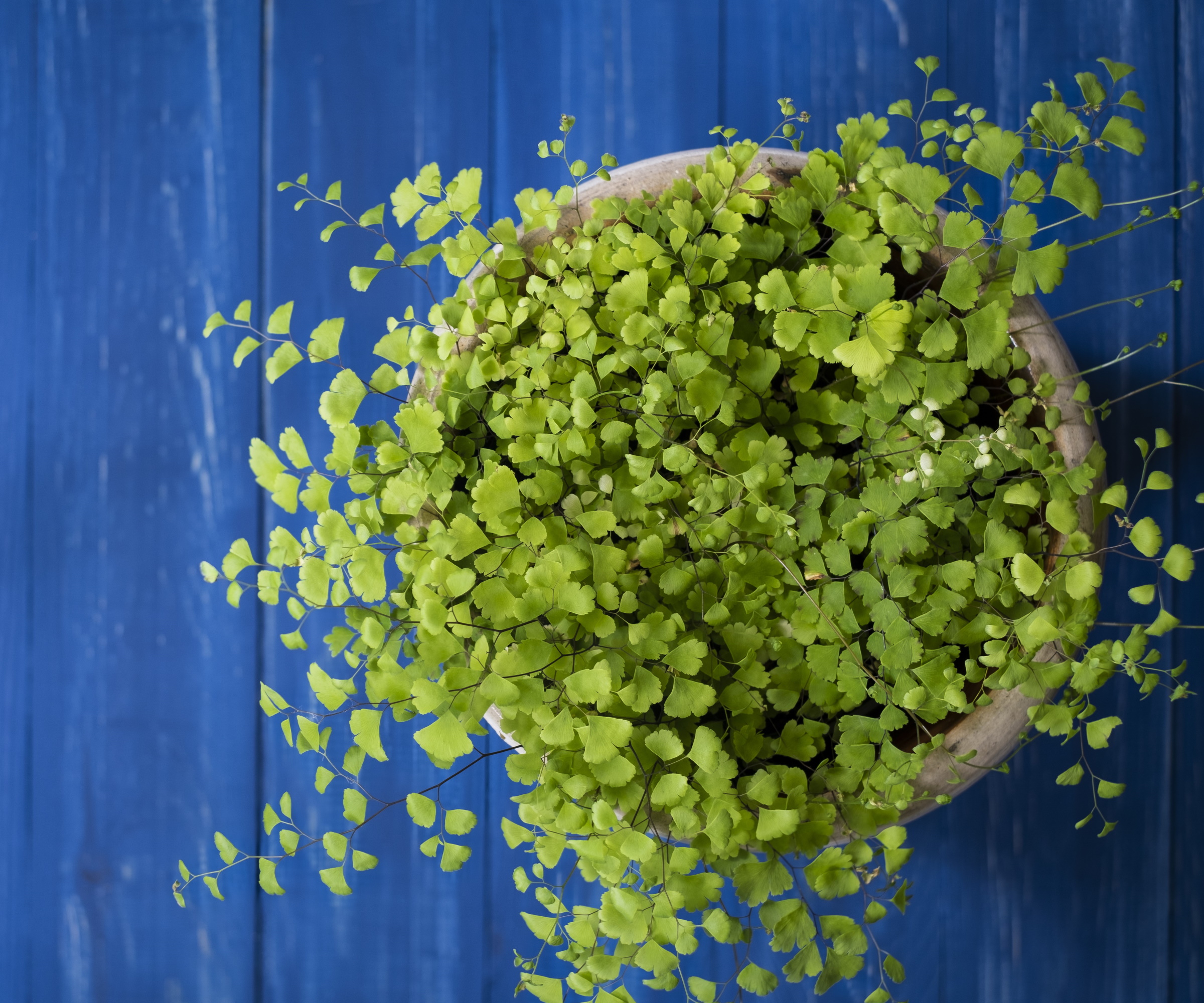
Boston fern
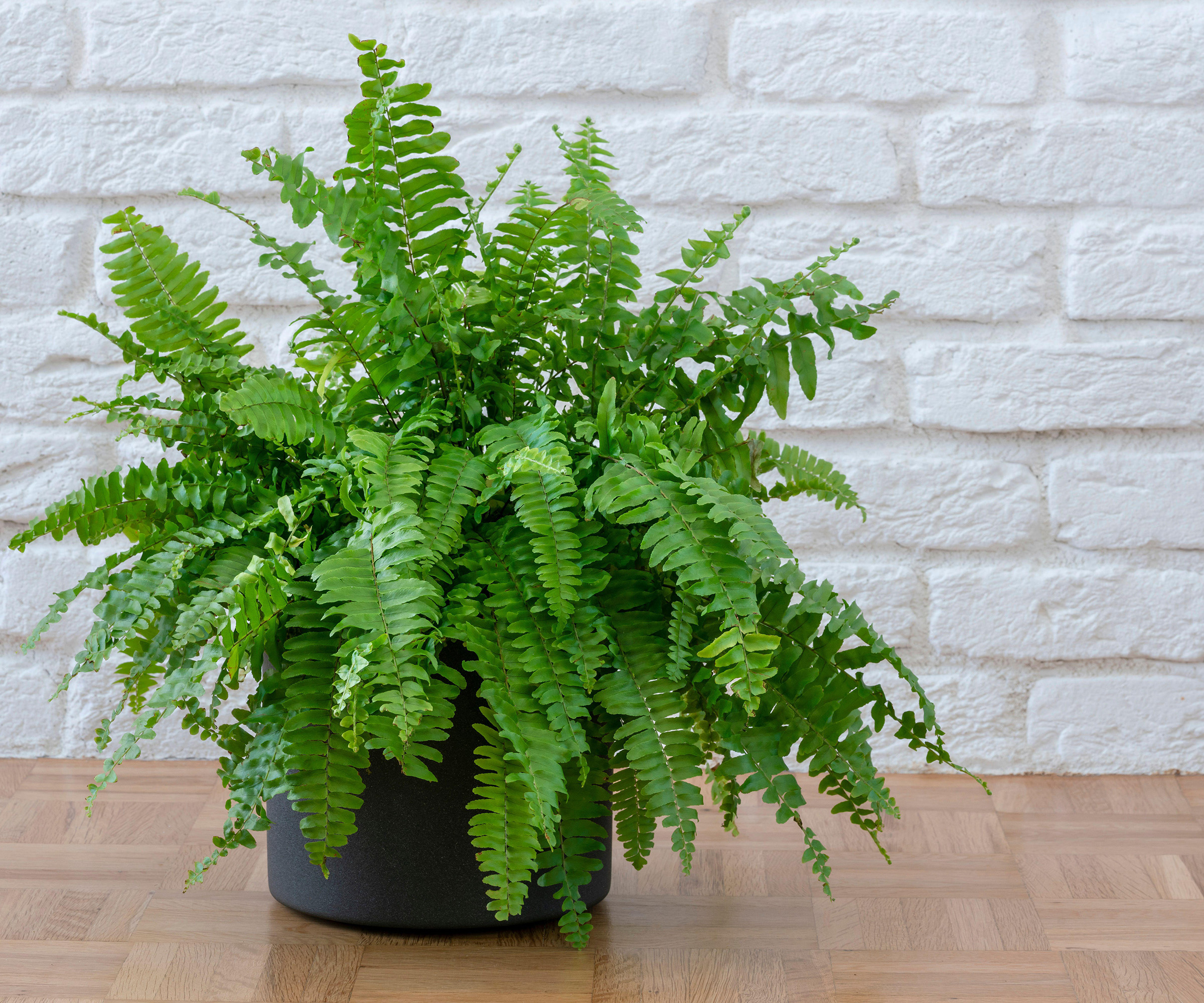
The Boston fern, Nephrolepis exaltata, is a popular houseplant 'known for lush, green fronds,' says Vladan Nikolic, houseplant expert and founder of Mr Houseplant.
Native to tropical regions, these ferns thrive in filtered light, making them ideal for homes with bright but indirect sunlight. With a preference for high humidity, Boston ferns can be a good option for bathrooms and kitchens.
Their arching green fronds create a cascading effect, making them a popular choice for hanging baskets, 'in which their long sword-shaped leaves can hang downwards,' says Vladan.
Key considerations when growing a Boston fern:
- Light: These plants thrive in indirect light. Too much direct light can burn the fronds, whereas too little light causes sparse, pale fronds.
- Watering: Boston ferns can be relatively drought-tolerant when compared to other ferns. 'Water your Boston Fern when the soil becomes slightly dry on the surface,' Vladan advises. 'When watering, use room temperature water and soak the soil thoroughly until water drains from the bottom of the container. Do not let the plant sit in water.'
- Soil: Use a free draining potting mix, combining perlite and some bark mulch with your potting mix.
- Fertilizing: Vladan recommends 'fertilizing your fern once a month with a high-nitrogen liquid fertilizer,' such as this indoor plant food from Walmart.com. Dilute your fertilizer to 'half-strength when the plant is actively growing.'
- Care: 'Prune your Boston Fern to remove diseased, damaged, or dead foliage,' Vladan says. 'You can trim the fronds to shape the plant and control its size.' If your Boston fern is turning brown, this is a sign the plant is unhappy.
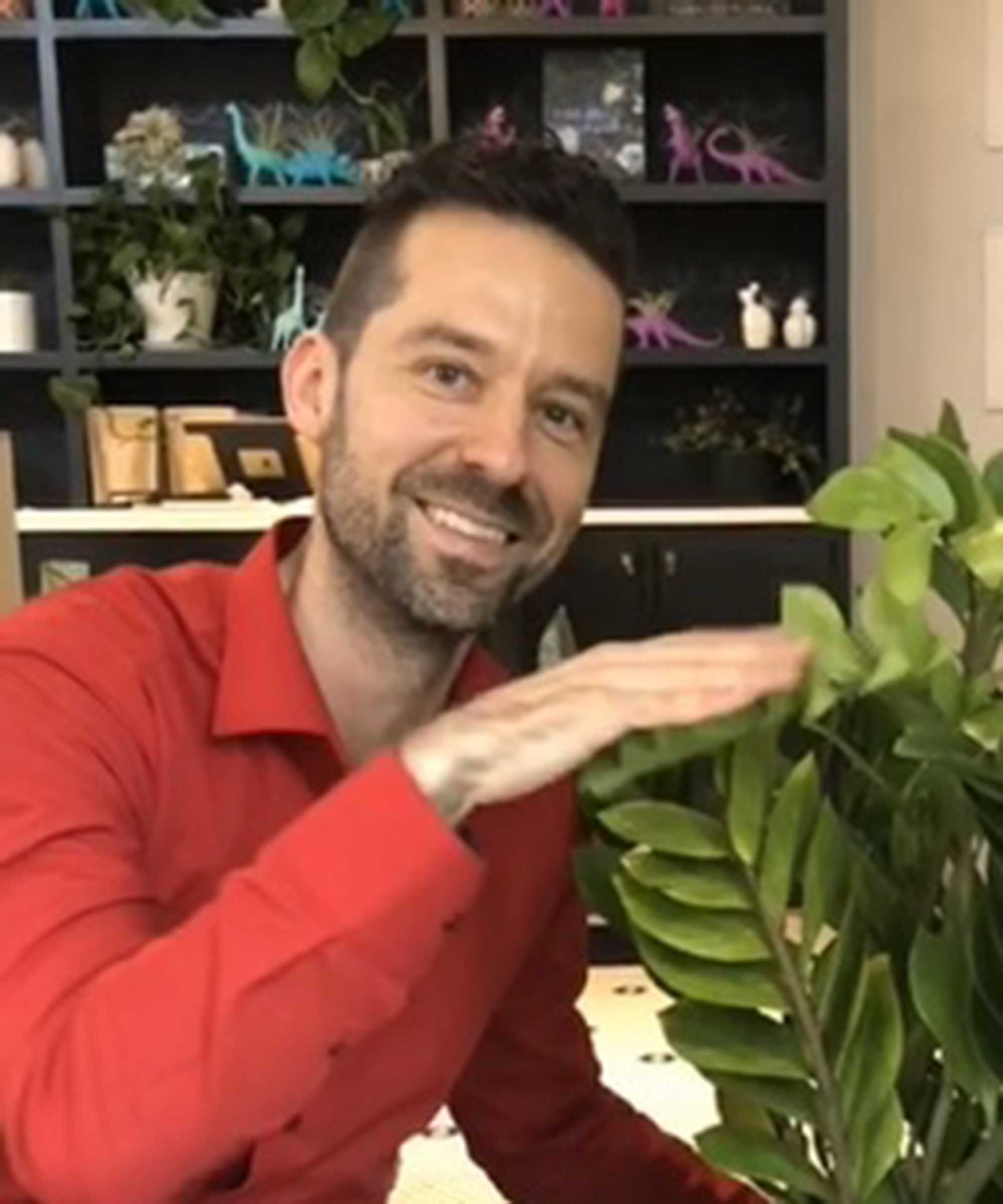
Vladan Nikolic (Mr. Houseplant) is a Houseplant Expert and the Founder of Mr. Houseplant LLC. He has over 10 years of houseplant experience and he is the founder of the indoor plant blog www.mrhouseplant.com, a former plant shop owner, and a social media influencer for houseplants with over 500,000 followers. He helps newcomers into the houseplant world become great plant parents.
Button fern
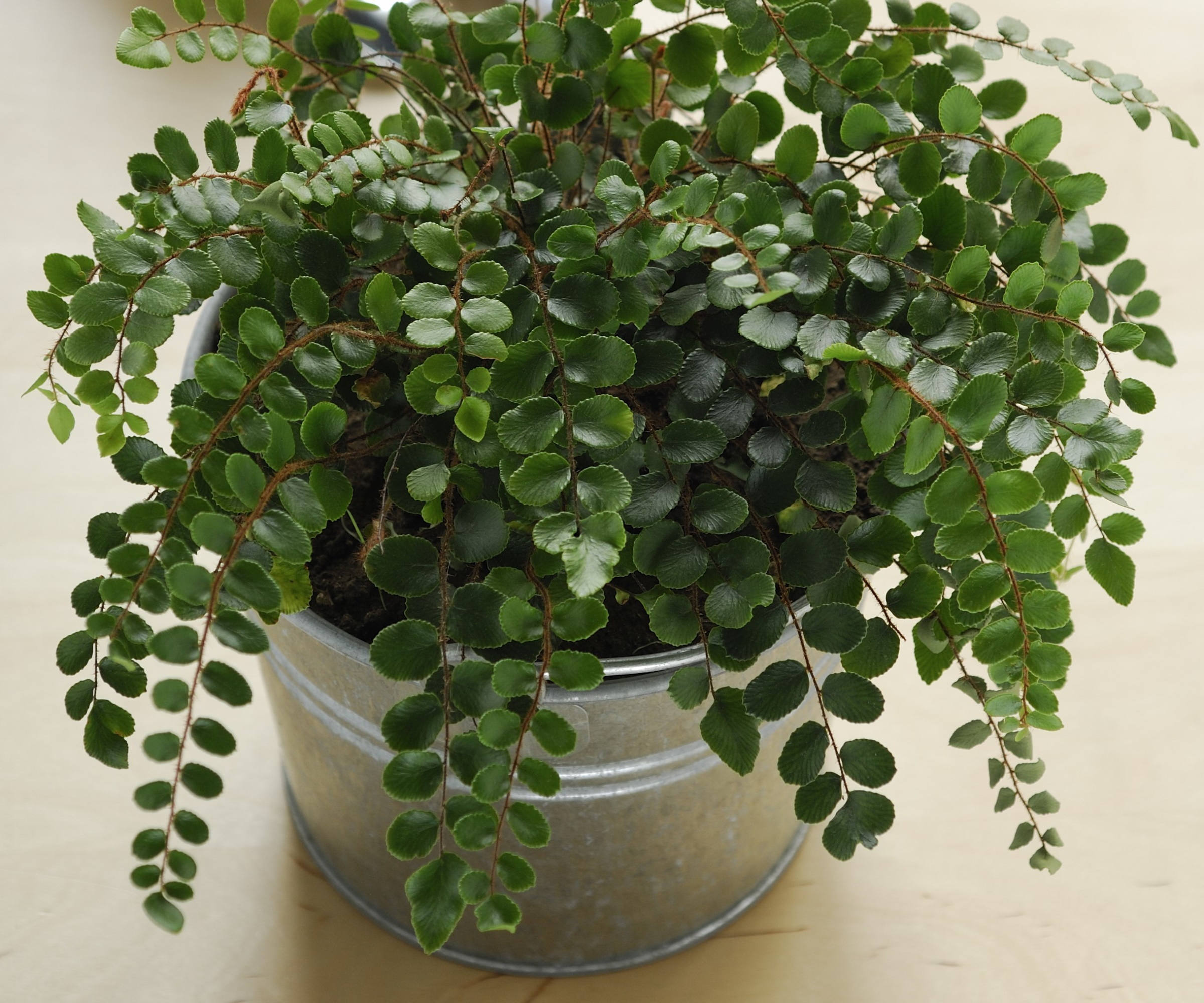
The button fern, Pellaea rotundifolia, is a petite fern distinct for its small, round leaflets and compact growth habit. Native to New Zealand and Australia, it is a popular choice for indoor gardens. The tiny, round leaflets give the plant its common name, resembling small buttons.
Button ferns thrive in bright, indirect light and with well-draining soil. They grow best with consistent moisture but should not be overwatered, so ensuring there is suitable drainage is key.
Key considerations when growing a button fern:
- Light: Button ferns prefer bright, indirect light and should be kept away from direct light, which can cause damage to the fronds.
- Watering: Allow the the soil to dry slightly between watering. Do not over water, and ensure that the button fern does not sit in water.
- Soil: Use a free draining potting mix, combining perlite and some bark mulch with your potting mix. Pre-mixed options are available, such as this Potting Mix from The Sill.
- Fertilizing: Fertilizer can be applied during the growing season using a high-nitrogen liquid fertilizer. Be sure to follow the instructions and dilute the fertilizer in water before application.
- Care: Remove diseased, damaged or dead foliage as and when necessary. Yellowing foliage can be a sign of over-watering, whilst browning foliage can be a sign of sun damage. Regularly inspect your plant for any signs of damage.
Asparagus fern
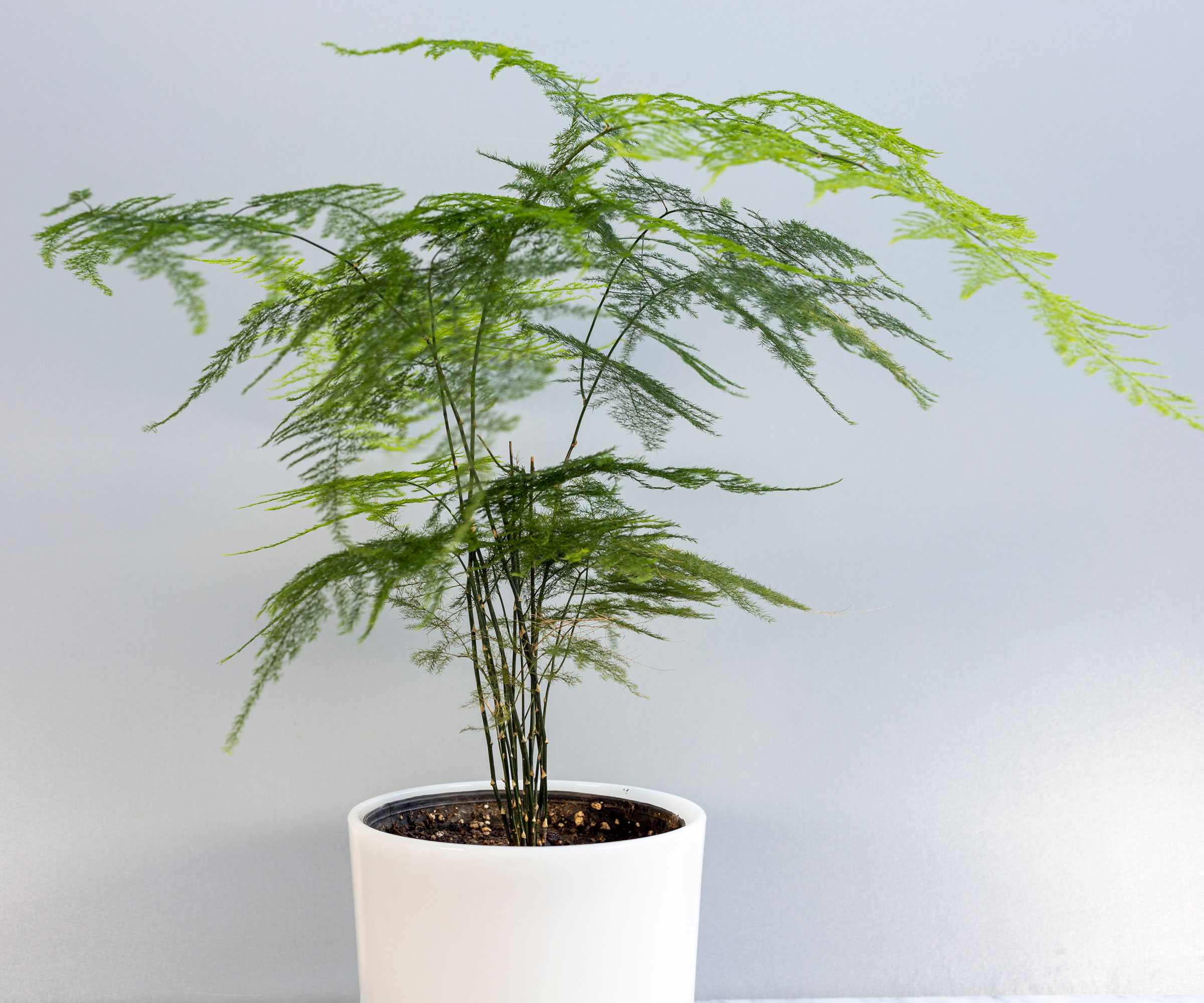
Asparagus fern or fox-tail ferns, Asparagus densiflorus, are unique ferns revered for their 'delicate, feathery-textured foliage,' says Vladan. Despite their name, they are not true ferns but belong to the asparagus family.
Popular as an indoor plant and as terrarium plants, they 'thrive in bright, indirect light,' Vladan advises. These false ferns are known for their adaptability to various conditions, making them an ideal selection for an indoor plant. 'Asparagus ferns love high humidity,' Vladan says, making this a good option for rooms with higher humidity, such as in your kitchen.
These ferns are readily available in most garden stores or online, such as this Foxtail Fern from The Sill.
Key considerations when growing an asparagus fern:
- Light: These ferns prefer bright, indirect light and should be away from direct light, which can cause damage to the fronds.
- Watering: Asparagus ferns have tuberous roots that store water, 'so the soil doesn’t have to be moist all the time,' Vladan says. Don’t let your fern sit in water as this can lead to root rot and a yellowing of the leaves.
- Soil: These plants 'need a well-draining and slightly acidic soil,' Vladan says. To make a good potting mix, consider adding perlite to your mixture to ensure drainage is sufficient.
- Fertilizing: 'Fertilize your asparagus fern monthly for lush new growth when the plant is actively growing,' Vladan says. Do not fertilize when the plant is not actively growing.
- Care: Prune any diseased, dead, or damaged fronds as necessary. Vladan recommends 'heavy pruning, close to the soil' when this occurs, which will help to 'encourage new growth.' Note that the asparagus fern is a fast grower and should be repotted once a year.

The asparagus or foxtail fern is a unique and eye-catching plant. Its distinctive appearance and adaptability make the Foxtail Fern a popular choice for a houseplant.
Bird's nest fern
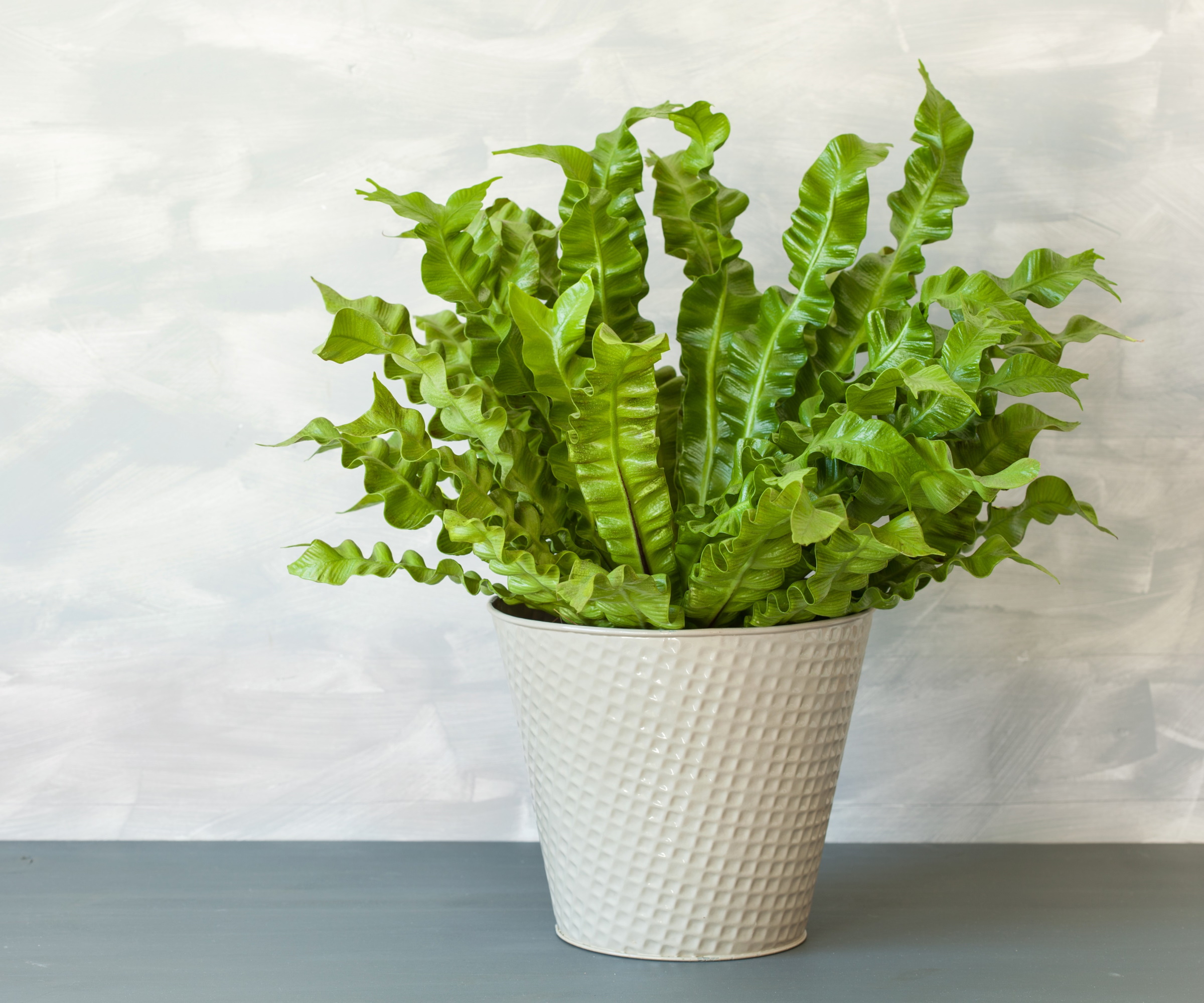
The bird's nest fern, Asplenium nidus, is a popular fern, known for its distinctive nest-like rosette of glossy, upright fronds. Native to the tropical rainforests of Southeast Asia and Australia, this fern adapts well to warm and humid indoor environments.
This fern thrives in indirect light and is a thirsty houseplant that has a preference for consistently moist soil. It can add a lush, tropical feel to your home. The bird's nest fern is a popular choice for both novice and experienced indoor gardeners, helping to create a vibrant display.
These ferns are readily available in most garden stores or online, such as this Bird's Nest Fern from Greendigs. There are many different varieities of this fern, and Tylor Rogers recommends Asplenium nidus ‘Victoria'. 'It is an easygoing bird's nest fern that has elegant, ruffled leaves,' he says. Consult your local garden store to see what varieties they have in stock.
Key considerations when growing a bird's nest fern:
- Light: Place your bird's nest fern in bright, indirect light. 'One of the most common mistakes I see when people want to grow ferns is growing them in places with low light,' Tylor says. 'Your fern is a tropical plant and will benefit from a bright location.'
- Watering: Water once a week or when the top inch of soil is dry to the touch. This fern prefers the soil to be kept moist, but not saturated. Do not let your fern sit in water.
- Soil: Bird's nest ferns prefer free-draining soil. To make a good potting mix, consider adding perlite to your mixture to ensure drainage is sufficient.
- Fertilizing: Tylor recommends 'feeding your fern with every watering during the growing season but at 1/4-1/2 strength of the recommended dosage listed on the bottle.' You should not feed your fern during fall or in winter.
- Care: Any damaged or dead fronds may be carefully cut at the base, ensuring not to damage any healthy fronds.
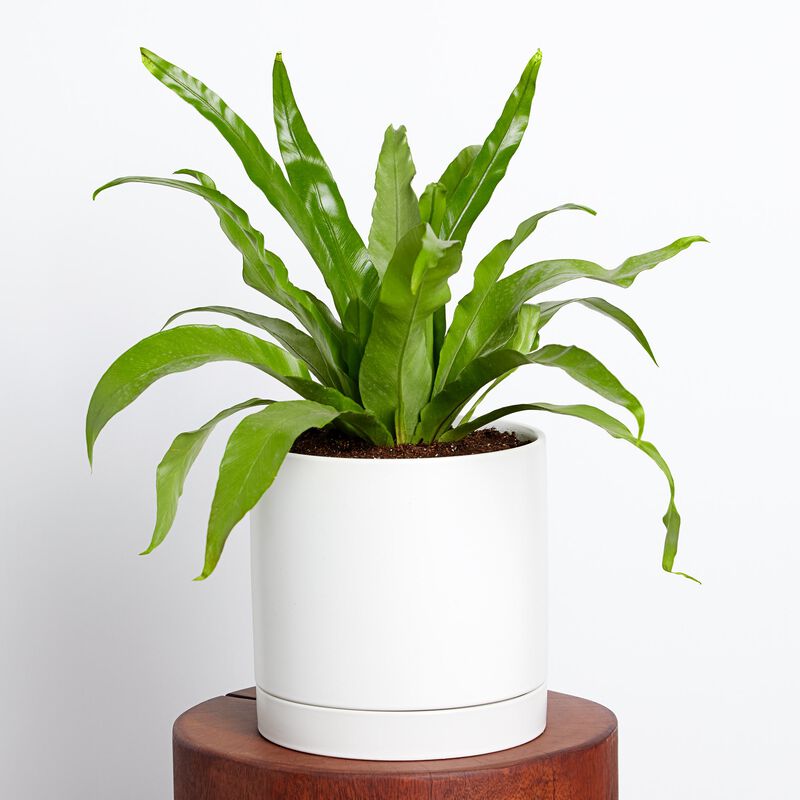
Asplenium nidus, or the bird's nest fern, will bring a tropical vibe right into your space. This fern sports undivided leaves that are rippled or crinkled. Slow-growing and easy to care for, it is perfect for beginners and collectors.
Hare-foot fern
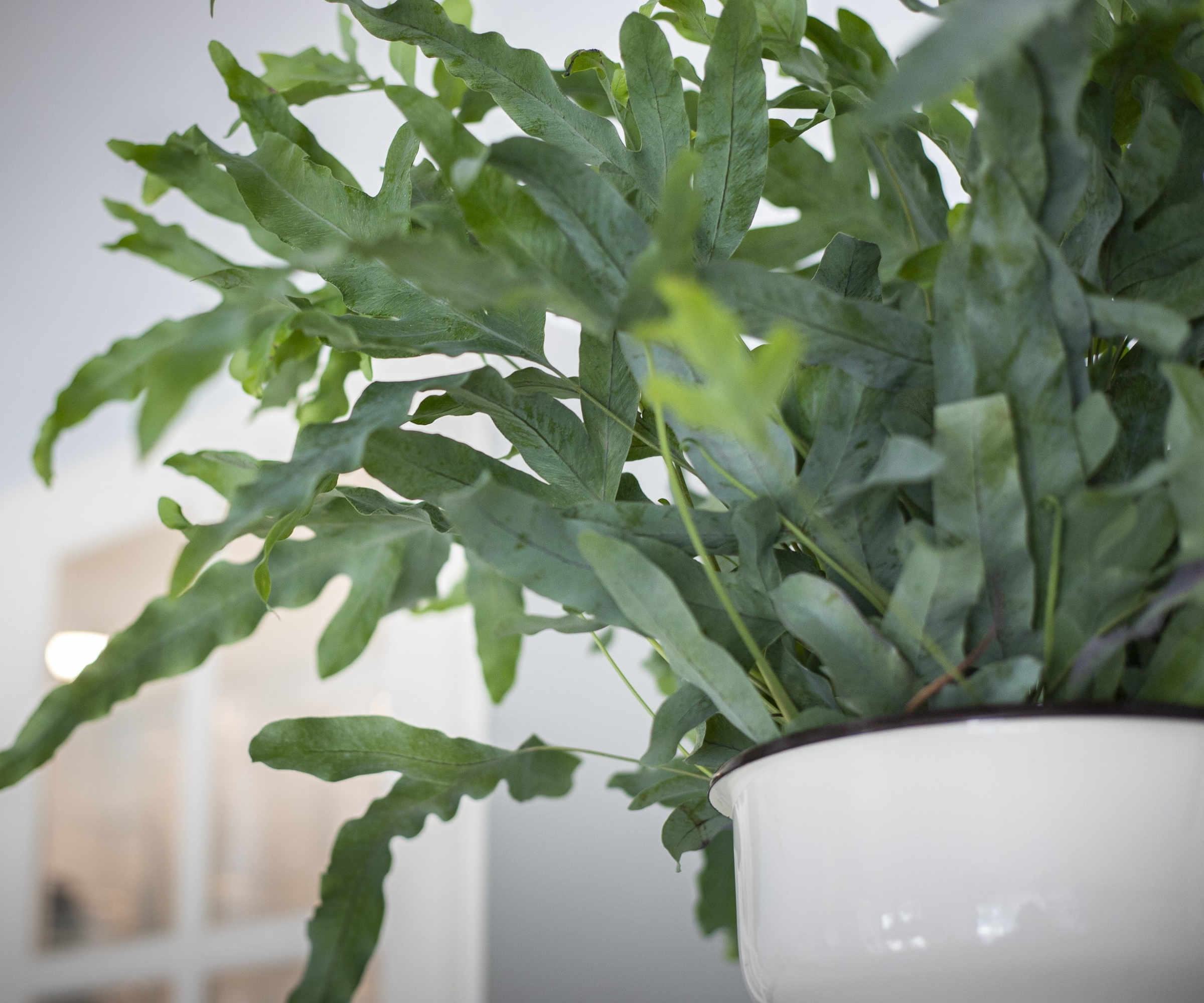
The hare-foot fern, Phlebodium aureum, is a captivating and distinctive fern species valued for its 'fuzzy brown rhizomes at the base of the plant, where the fronds emerge from,' Tylor says.
Native to tropical regions, this fern will 'thrive in a variety of settings and have beautiful silvery-blue foliage,' Tylor continues. Whilst not as common as other ferns featured here, if you can get hold of the hare-foot fern, it is sure to add impact to your home.
Key considerations when growing a hare-foot fern:
- Light: Place this fern in a location with 'indirect light,' Tylor advises. Preferably away from a window where there is a risk that direct sun will damage the fronds.
- Watering: This fern prefers the soil to be kept moist but be sure to not let your fern sit in water. 'People also mistakenly think that misting your fern can supplement watering,' Tylor says. 'While your fern will love being misted, make sure to water it thoroughly until the water drips out of the drainage hole.'
- Soil: Hare-foot ferns prefer free-draining soil, as with all other ferns discussed here. To make a good potting mix, consider adding perlite or grit to your mixture.
- Fertilizing: Feed this fern with every watering during the growing season, but at '1/4-1/2 strength of the recommended dosage listed on the bottle,' Tylor says. 'This ensures your fern is getting consistent nutrients to encourage growth.'
- Care: Inspect your hare-foot fern regularly to check for damage or disease. Any impacted fronds may be cut at the base, careful not to damage any healthy fronds.
FAQs
What is the best fern to have in a bathroom?
The Boston fern is a great option when considering the best bathroom plants, tolerating high humidity as will be found in a bathroom. It is also considered a low-maintenance fern, and a perfect option for beginners or those new to indoor gardening.
Growing ferns indoors can create a green sanctuary that enhances the aesthetic of your home. Why not think about adding some other fast-growing indoor plants to your fern collection?
Sign up to the Homes & Gardens newsletter
Design expertise in your inbox – from inspiring decorating ideas and beautiful celebrity homes to practical gardening advice and shopping round-ups.

Thomas is a Content Editor within the Gardens Team at Homes and Gardens. He has worked as a professional gardener for both public spaces and private estates, specializing in productive gardening, growing food and flowers. Trained in Horticulture at the Garden Museum, he has written on gardening and garden history for various publications, including The English Garden, Gardens Illustrated, Hortus, The London Gardener and Bloom. He has co-authored a Lonely Planet travel book, The Tree Atlas, due out in 2024.
-
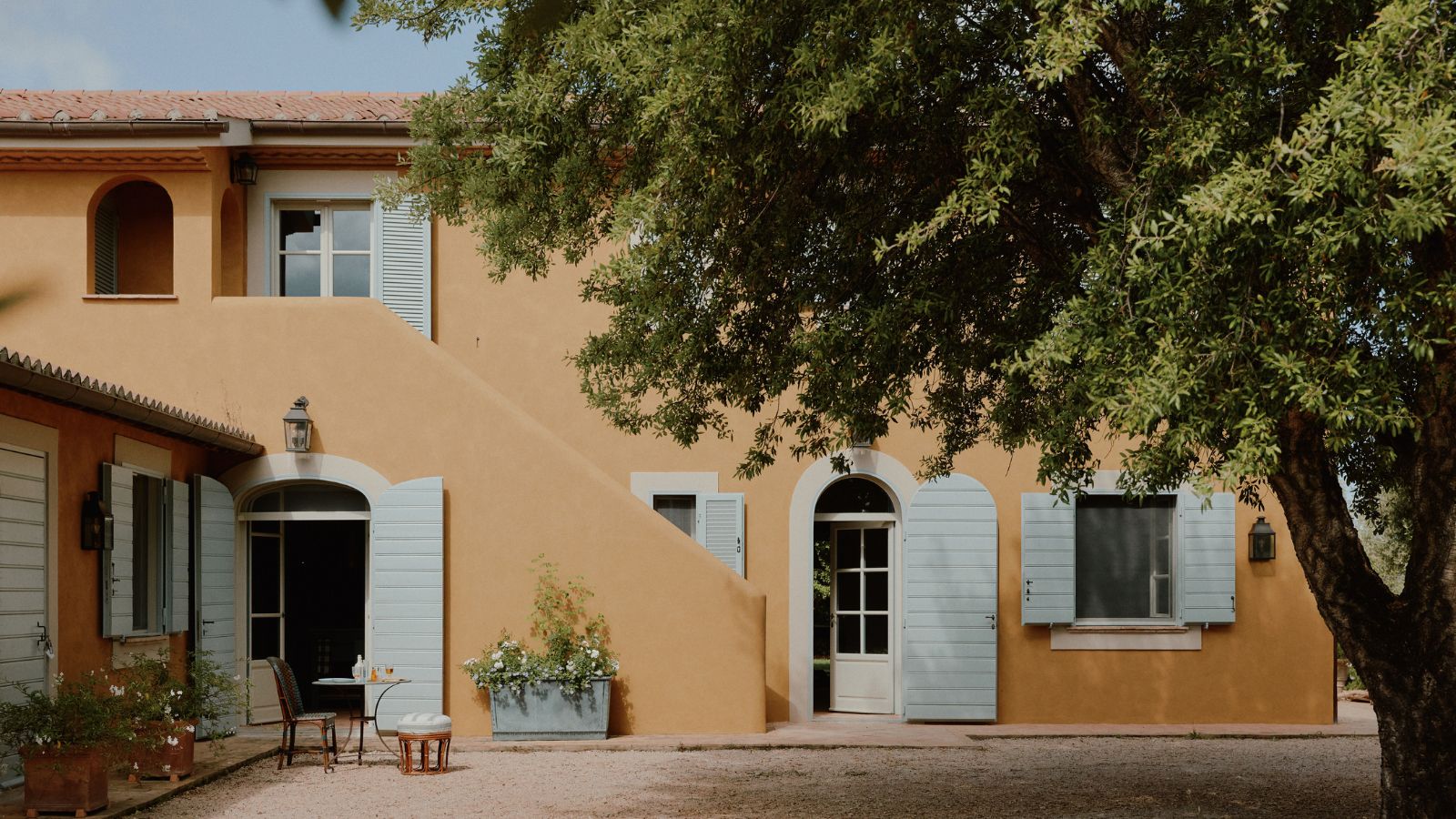 How a British designer brought together the different tastes of a couple wanting to create the dream future-proofed home in the idyllic Italian countryside
How a British designer brought together the different tastes of a couple wanting to create the dream future-proofed home in the idyllic Italian countryside‘They wanted a house that would feel immediately like home the minute they arrived, and somewhere relaxing to spend time together as a family and entertain friends.’
By Fiona McCarthy
-
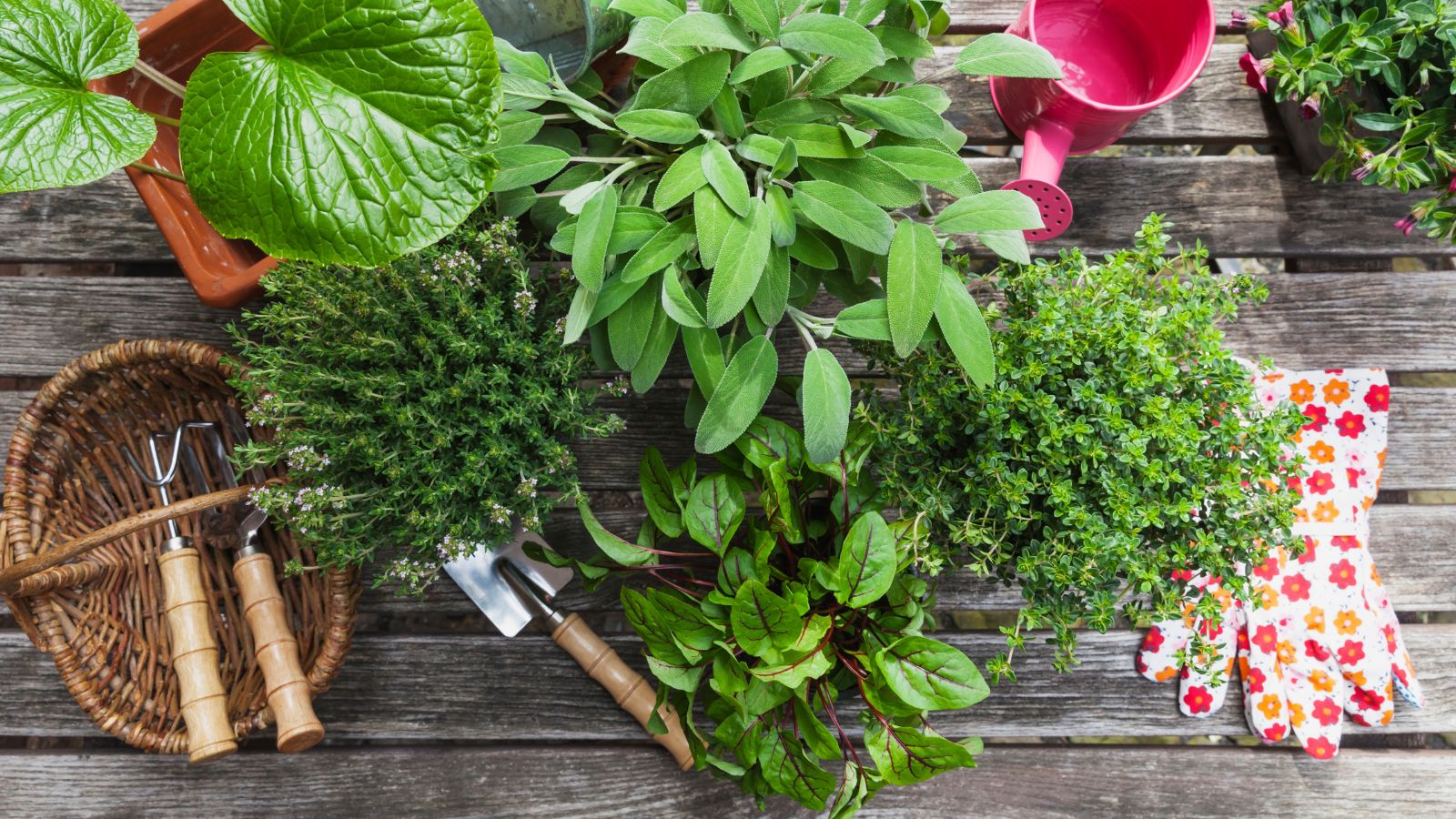 What is your birth month herb? Discover the symbolic meaning behind yours
What is your birth month herb? Discover the symbolic meaning behind yoursHerbs offer symbolic wisdom, and play to the natural rhythms of the season
By Lola Houlton